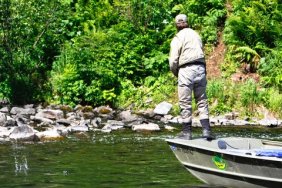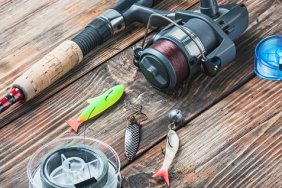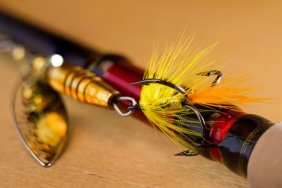Boat docks are absolutely one of the greatest bass holding structures on the water. The best part is they can be found in almost every lake. Docks provide bass with shade and ambush cover for the schools of panfish roaming the shoreline.
Due to their bass-magnet status, skipping docks should be a skill any aspiring angler must possess. Skipping may be a little tricky to master at first, but once you get the hang of it you’ll be thankful you put the time in. Here are a few tricks to help you get started.
Skipping involves making a strong sidearm cast from a low angle so that your bait casts almost parallel to the water’s surface and skips far under the cover of the dock. In this way, your bait sinks straight below the dock where the fish are likely resting.
It’s All in the Wrist
You’ll want to leave about a foot and a half of line down from the rod tip, and use a sidearm cast with wrist action, releasing the line when the rod is near the surface of the water. If you’re worried about getting hung up, try skipping in open water until you get confident, then head to the docks.
Watch pro angler Scott Martin demonstrate how to skip under docks in the video below.
What You’ll Need
Soft plastic stick baits like the Strike King Ocho or swimbaits like Berkley’s Grass Pig skip almost better than a flat rock. The shape of stickbaits allows them to be skipped easily, making them perfect for when you’re first learning to skip. Swimbaits skip well and they can be used to cover a lot of water quickly when you’re searching docks for bass.
Now that you’ve picked up the right baits for skipping, it’s time to make sure you have the right tackle for the job. I like to use a six to seven foot medium power spinning rod, spooled with light braid or monofilament. The tip on a rod of this style has a lot of whip so that when you make your sidearm cast, the bait is launched with a lot of speed.
Get Jiggy With It
Once you’ve got the hang of skipping, see if you can tackle the technique with a baitcast reel and a jig. Jigs are great skipping baits, as their flat head and skirt slide well across the water’s surface. Start out with lightweight models in the ¼ or 3/8 ounce range and practice short, sidearm casts while controlling the spool with your thumb. Try not to overpower the cast; instead, aim for a smooth cast. The goal should be to release the jig about a foot from the water’s surface and have it hit the water about a foot or two in front of your target.








